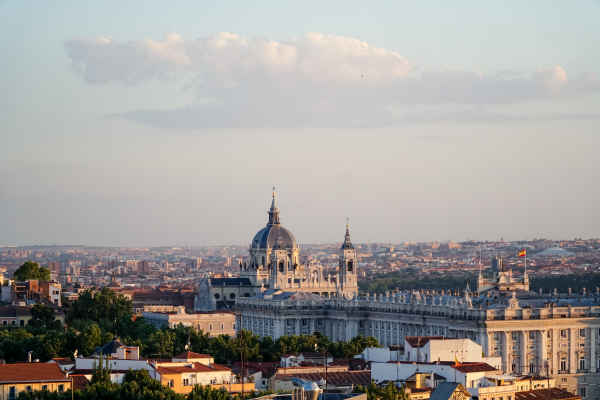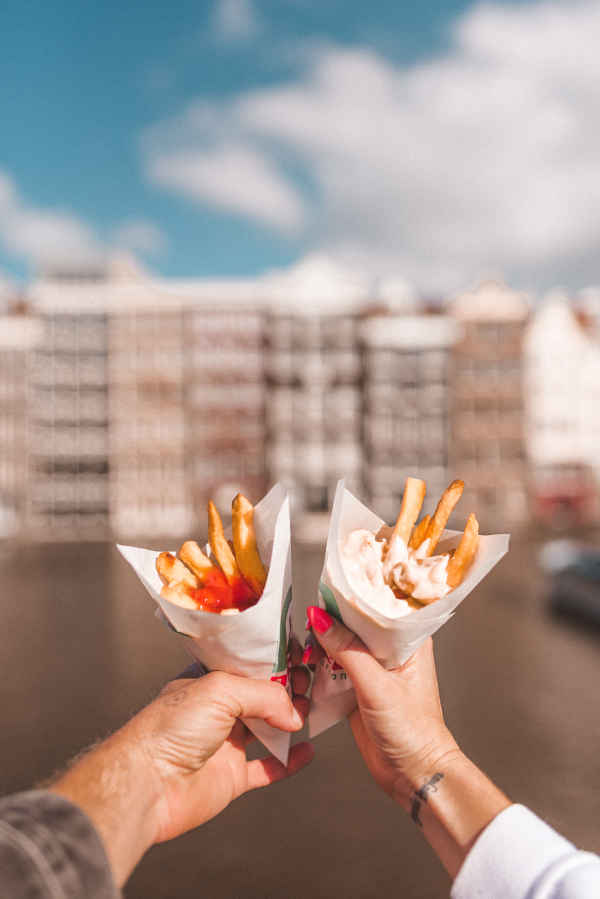
Eating isn't just for pleasure in Italy - it's a way of life! From family occasions to catch ups with friends, the Italians love any excuse to chatter over their local cuisine - and honestly, who can blame them? But for the tourist in Italy, the Italian eating habits can be a tad mystifying, particularly when we’re talking about a full traditional Italian dinner, usually eaten on special occasions. Fear not! Here's a guide to working out what's going on.
Aperitivo
Come the afternoon, the Italians love to indulge in a concept called aperitivo. This is all about socialising, as Italians do best, whilst sipping beautiful cocktails and nibbling delectable snacks in the hours before dinner time. To dive in, all you have to do is buy a drink, usually a light but relatively bitter drink like Negroni, Prosecco, Aperol Spritz or a glass of wine. It'll usually set you back around €10, slightly less outside the big cities.
Aperitivo can take a few forms. Some places provide just a few snacks to compliment your cocktail, but many involve four words every cash-strapped backpacker yearns to hear - "All You Can Eat"! This will be a generous buffet spread of delicious Italian food in nibble size portions. Tiny pizza slices, meats and cheeses, roasted vegetables and crostini loaded with tasty toppings could all make an appearance. Check at the bar first that it takes the form of a buffet, rather than just a few tidbits so you aren't disappointed!

Antipasti
Now onto a traditional Italian dinner. To get the taste buds truly ravenous as they wait for their first real course, Italians kick off the meal with platters of food known as antipasti. Expect boards of cold meat like salami or prosciutto (Italian ham) alongside cheeses which the whole table can dip into. You could also get small toasted pieces of bread (crostini) with tasty toppings. Don't go overboard though, as there’s a long way to go yet!
Primo (First Course)
Next up, we've got our primo, the first hot dish of the meal. At this point, unsuspecting tourists sometimes stuff themselves without realising there's more to come! For the pasta lovers, this is the highlight of the meal - you’ll see classic pastas like spaghetti, tagliatelle and pappardelle matched with delicious Italian sauces. These could include ragu (like Bolognese, the typical meat sauce), pesto (classic green sauce made from basil and pine nuts), marinara (simple yet delicious tomato sauce), and aglio, oglio e peperoncino (translates to garlic, oil and chillli pepper).
Other Italian classic like lasagna or gnocchi (potato dumplings) could also feature on the menu and are definitely worth a try. Don't be surprised if it doesn't look like a main meal portion to you, as this isn't meant to be the end of the savory part of the meal!
Secondo (Second Course)
Now comes the main part of the dinner! Mouthwatering meat or fish dishes often done as per the local regional tradition, so it’s well worth checking what the area you’re in is famous for. In Milan, for example, they have a sumptuous dish called Ossobuco alla Milanese - tender veal shanks slow cooked in white wine. Meanwhile over in Tuscany you could try a Bistecca alla Fiorentina, a juicy mouth-watering steak from Florence. If you find yourself on the coast, this could be the perfect time to sample the local fish specialities. Don’t be afraid to ask the waiter what their seasonal suggestion would be.
These dishes are at the heart of the meal, and will often be the priciest part. What confuses the tourists is the fact that they arrive without any sort of accompaniment. No need to sit gazing forlornly at the plate though - this is where the next course comes in..
Contorni (Sides)
An integral part of the Italian dining experience is the side dishes or contorni, ordered separately and usually served alongside the second course to bolster them. Expect fresh vegetables, potatoes or a seasonal salad - whatever you think would match your secondo. These will typically come in separate dishes to your mains, making them easy to share.
Dolce (Dessert)
This might well be the gem in the crown that you’ve been waiting for since you sat down, and I don’t blame you. Italians are utter maestros when it comes to the humble dessert, although you might find after all that pasta and meat that you’re struggling for space. Tiramisu is always high on people’s lists, a spongey, creamy creation infused with coffee and a drop of alcohol. Panna Cotta is another classic in the form of sweetened thickened cream sometimes served with fruity toppings. If all else fails, you can’t go wrong with a classic Italian gelato.

Caffè (Coffee)
No Italian meal would be complete without a strong caffè to round everything off. It comes in the form of a small but potent little espresso, typically without any milk or sugar. Just the pick-me-up you need to get you out of that post-dinner food coma!
Digestivo
The finale of an Italian dinner is the tiny alcoholic digestif drink served to help with digestion - this is essentially a shot. Sickly sweet Limoncello is a popular choice, a luminous yellow lemon liqueur usually produced in Southern Italy. Another option is the eye-wateringly strong clear drink Grappa, made from the skins, seeds and stems left over during winemaking. Boasting a percentage of anything from 35% to 60%, it’s sure to warm the throat as you see out the richest meal of your life.







